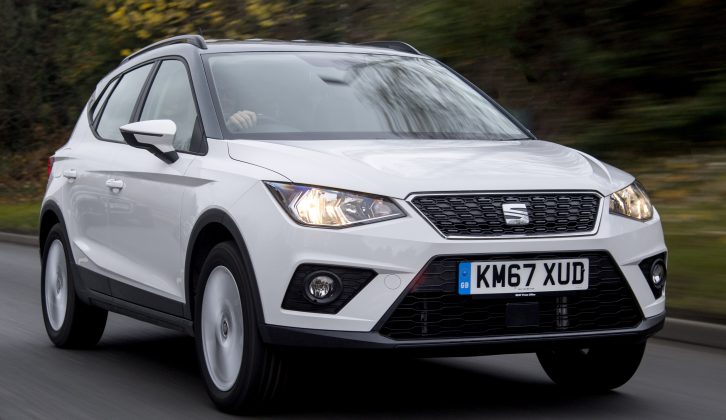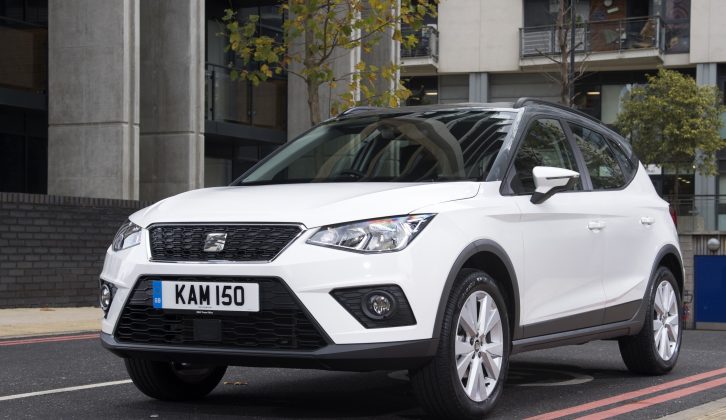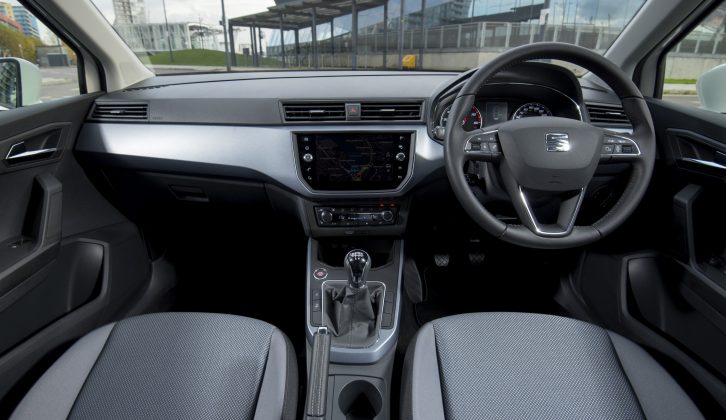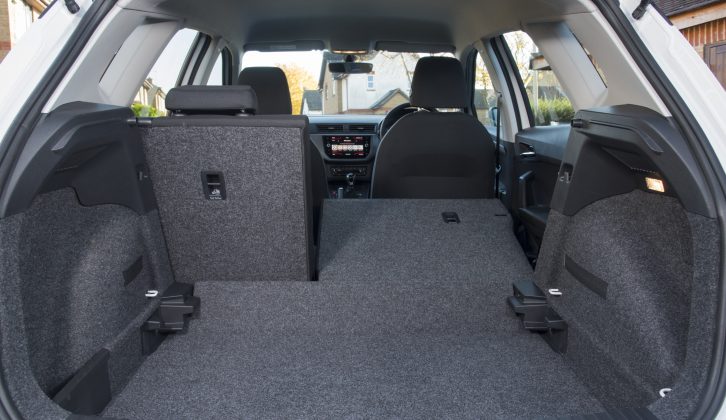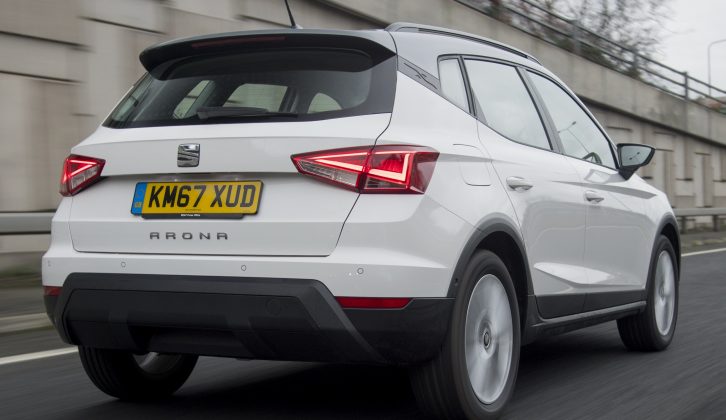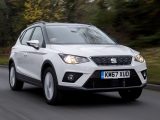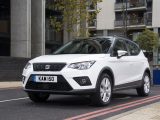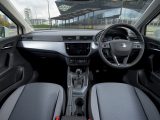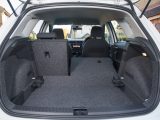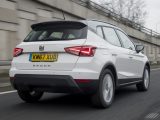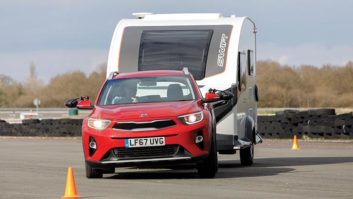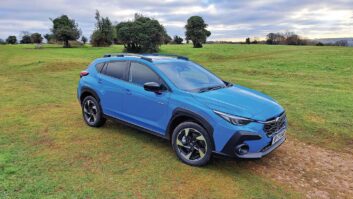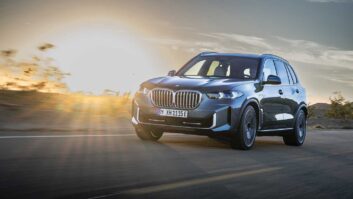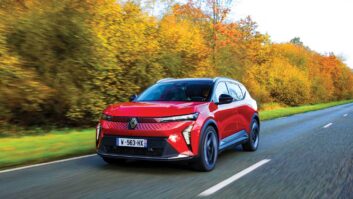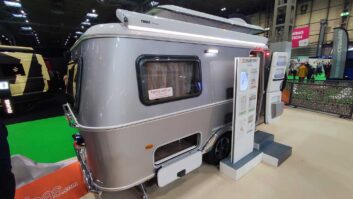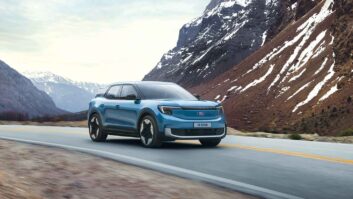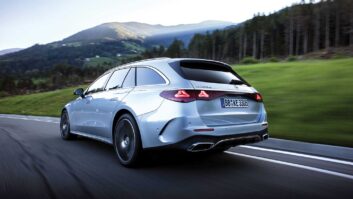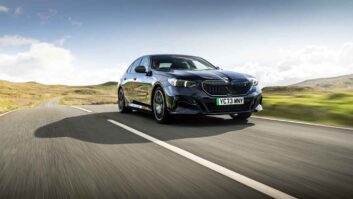What’s the difference between a crossover and an SUV? Not a lot, really.
The term ‘crossover’ became popular when the likes of Nissan launched cars which mixed elements of a conventional hatchback with 4×4 styling cues, even if the car didn’t necessarily have four-wheel drive.
Nowadays the words ‘crossover’ and ‘SUV’ are used almost interchangeably, depending on which the manufacturer’s marketing department thinks will resonate more with the target market.
This is the new Seat Arona, which the manufacturer calls an SUV. It’s a description which suggests sporty toughness, whereas perhaps ‘crossover’ has come to imply a halfway house which isn’t quite one thing or the other.
OK, but what tow car potential does it have?
Let’s leave the semantics to one side – call it what you like, the new Seat Arona is a hatchback on stilts of the kind car buyers can’t seem to get enough of.
It’s a little brother to the popular and very capable Ateca, so size-wise think of it as a competitor for the Mazda CX-3 and Nissan Juke.
Most buyers are expected to choose one of the petrol engines. There’s a pair of 1.0 TSI engines with either 95PS (94bhp) or 115PS (113bhp), and a 1.5 TSI with 150PS (148bhp).
The more powerful of the two 1.0-litre engines is available with a choice of a manual gearbox or a DSG automatic, the other two engines are manual only.
If you’re keeping faith with diesel (and given that we’re reviewing the Arona as a potential tow car, there are many good reasons why you should), there are two 1.6-litre options with 95PS and 115PS. The less powerful will shortly be available with an auto as well as a manual.
Whichever engine and gearbox combination you opt for there’s no 4×4 – the Arona is strictly front-wheel-drive only. (Does that make it a crossover rather than an SUV? Let’s not go there again…)
Number crunching
Given its size and weight, the Seat Arona is best suited to lightweight caravans like the Swift Basecamp, or even micro-tourers and trailer tents.
The heaviest model is the higher powered diesel. Even this has a modest kerbweight of 1303kg including 75kg for the driver. That gives an 85% match figure of 1108kg, which is within the legal towing limit of 1200kg. All models have a modest noseweight limit of 55kg.
Unfortunately this version, which could well be the pick of the range for regular towing duties, wasn’t available for us to drive.
However, we did take a turn in the 95PS diesel. Despite its modest power output it pulled more strongly than we expected, helped by its 184lb ft torque output – exactly the same as the more powerful diesel musters. The official test promises excellent fuel economy, with a combined figure of 70.6mpg.
The 95PS model is only slightly lighter than the 115PS, with a kerbweight of 1297kg. However, the legal towing limit drops to 1100kg.
Petrol performers?
Of the petrol models, the 1.5 TSI 150PS has the most potential as a tow car.
It’s the torquiest as well as the most powerful, matching the diesels’ 184lb ft. By some way it’s the quickest model in the range, and in solo driving it overtakes decisively and has poke in reserve on the motorway.
The engine uses some clever technology which shuts down two of the four cylinders under light loads to improve fuel economy. It achieves 55.4mpg on the combined cycle, according to the official figures.
As you’d expect, the 1.5 petrol is lighter than the diesels, with a kerbweight of 1222kg, an 85% match figure of 1039kg and a legal towing limit of 1200kg.
Despite the 1.5 TSI’s considerable appeal, Seat expects the 1.0 TSI 115PS engine to be the most popular.
What it loses in performance it makes up for in character with an off-beat three-cylinder thrum and a willing nature. The official combined economy figure is 57.6mpg, dropping to 56.5mpg for high-spec models with larger alloy wheels.
As lively as this engine is, it’s likely to have its work cut out towing anything heavier than a micro-caravan. There’s just 148lb ft of torque, a kerbweight of 1187kg and a legal towing limit of 1100kg.
Firm, controlled, fun
Whatever engine is under the bonnet, the new Seat Arona is one of the best small SUVs to drive.
As the sportiest of the VW Group’s mainstream brands, Seat’s engineers sometimes tune suspension for a ride that’s overly stiff on Britain’s poorly surfaced roads.
The Arona isn’t all that forgiving of sharp lumps and bumps, but it’s firm rather than harsh, and tightly controlled suspension is usually a good sign for towing a caravan.
The petrol models in particular are more fun to drive than most rivals. The steering is light but accurate, body lean isn’t excessive, and the manual gearbox has a tactile and precise feel.
At a high-speed cruise the ride smoothes out and engine noise settles into the background. However, less road noise would improve the Arona’s credentials as a motorway car.
Getting comfy
It’s easy enough to get comfortable for the long haul, with plenty of adjustment for the steering wheel and seat. The dashboard has a clean and uncluttered design, but the hard and shiny plastic finish is disappointing.
Considering the Arona’s size, the rear seats are surprisingly roomy for adults. A passenger of just over six-feet can sit behind a driver of similar height without feeling cramped.
Boot space is reasonable, too. The 400-litre capacity with the rear seats upright is more than you’ll find in a Mazda CX-3 or a Nissan Juke, but smaller than a Peugeot 2008 or Renault Captur‘s luggage area.
Prices start from £16,555. That’s more than the cheapest Nissan Juke by around £1500, but the Seat compensates with plenty of standard kit and its resale values are predicted to be strong.
Unfortunately, none of Seat’s Arona press fleet has a towball, but we’re going to politely twist some arms until we get a chance to tow with one.
On first acquaintance there’s every reason to expect it to make a capable lightweight tow car. And it’s certainly a very fine crossover or SUV…
The new Seat Arona is one of the best small SUVs to drive
